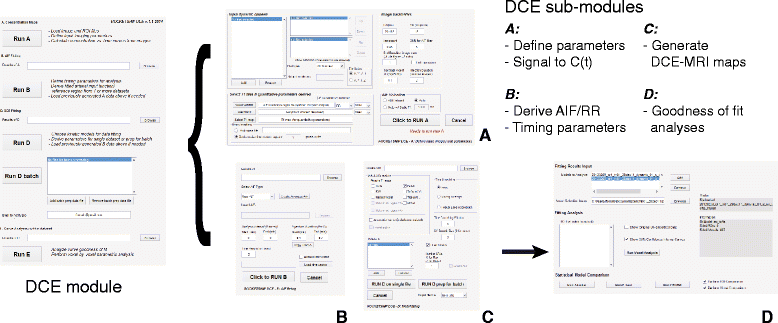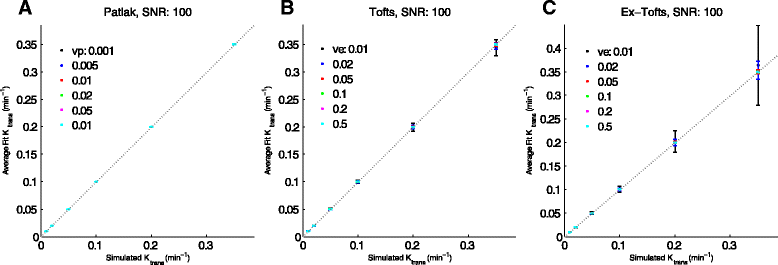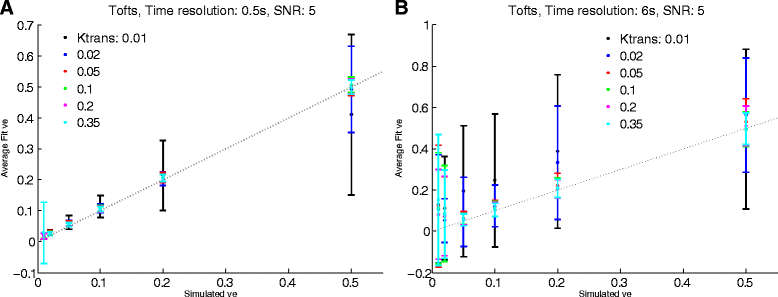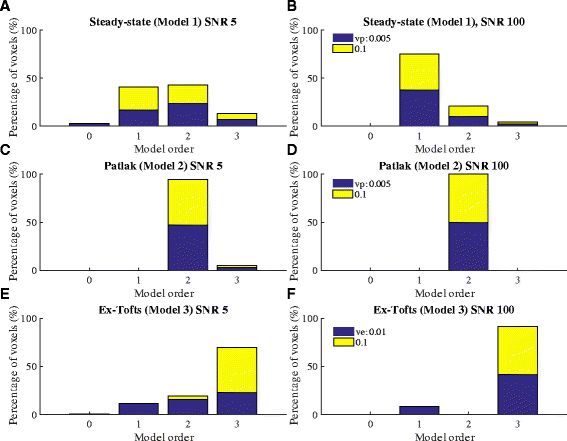ROCKETSHIP: a flexible and modular software tool for the planning, processing and analysis of dynamic MRI studies
- PMID: 26076957
- PMCID: PMC4466867
- DOI: 10.1186/s12880-015-0062-3
ROCKETSHIP: a flexible and modular software tool for the planning, processing and analysis of dynamic MRI studies
Abstract
Background: Dynamic contrast-enhanced magnetic resonance imaging (DCE-MRI) is a promising technique to characterize pathology and evaluate treatment response. However, analysis of DCE-MRI data is complex and benefits from concurrent analysis of multiple kinetic models and parameters. Few software tools are currently available that specifically focuses on DCE-MRI analysis with multiple kinetic models. Here, we developed ROCKETSHIP, an open-source, flexible and modular software for DCE-MRI analysis. ROCKETSHIP incorporates analyses with multiple kinetic models, including data-driven nested model analysis.
Results: ROCKETSHIP was implemented using the MATLAB programming language. Robustness of the software to provide reliable fits using multiple kinetic models is demonstrated using simulated data. Simulations also demonstrate the utility of the data-driven nested model analysis. Applicability of ROCKETSHIP for both preclinical and clinical studies is shown using DCE-MRI studies of the human brain and a murine tumor model.
Conclusion: A DCE-MRI software suite was implemented and tested using simulations. Its applicability to both preclinical and clinical datasets is shown. ROCKETSHIP was designed to be easily accessible for the beginner, but flexible enough for changes or additions to be made by the advanced user as well. The availability of a flexible analysis tool will aid future studies using DCE-MRI. A public release of ROCKETSHIP is available at https://github.com/petmri/ROCKETSHIP .
Figures







References
-
- Parker GJ, Padhani AR. T1‐W DCE‐MRI: T1‐Weighted Dynamic Contrast‐Enhanced MRI. 2004. pp. 341–64.
Publication types
MeSH terms
Grants and funding
- R01 AG039452/AG/NIA NIH HHS/United States
- R01 NS034467/NS/NINDS NIH HHS/United States
- R01 EB00194/EB/NIBIB NIH HHS/United States
- R37AG23084/AG/NIA NIH HHS/United States
- R37 NS034467/NS/NINDS NIH HHS/United States
- RF1 AG039452/AG/NIA NIH HHS/United States
- T32GM07616/GM/NIGMS NIH HHS/United States
- T32 GM007616/GM/NIGMS NIH HHS/United States
- P50 AG005142/AG/NIA NIH HHS/United States
- R01 AG023084/AG/NIA NIH HHS/United States
- R01 EB000993/EB/NIBIB NIH HHS/United States
- P50 CA107399/CA/NCI NIH HHS/United States
- R01AG039452/AG/NIA NIH HHS/United States
- R37NS34467/NS/NINDS NIH HHS/United States
- R01 EB000194/EB/NIBIB NIH HHS/United States
- R37 AG023084/AG/NIA NIH HHS/United States
LinkOut - more resources
Full Text Sources
Other Literature Sources
Medical
Molecular Biology Databases

